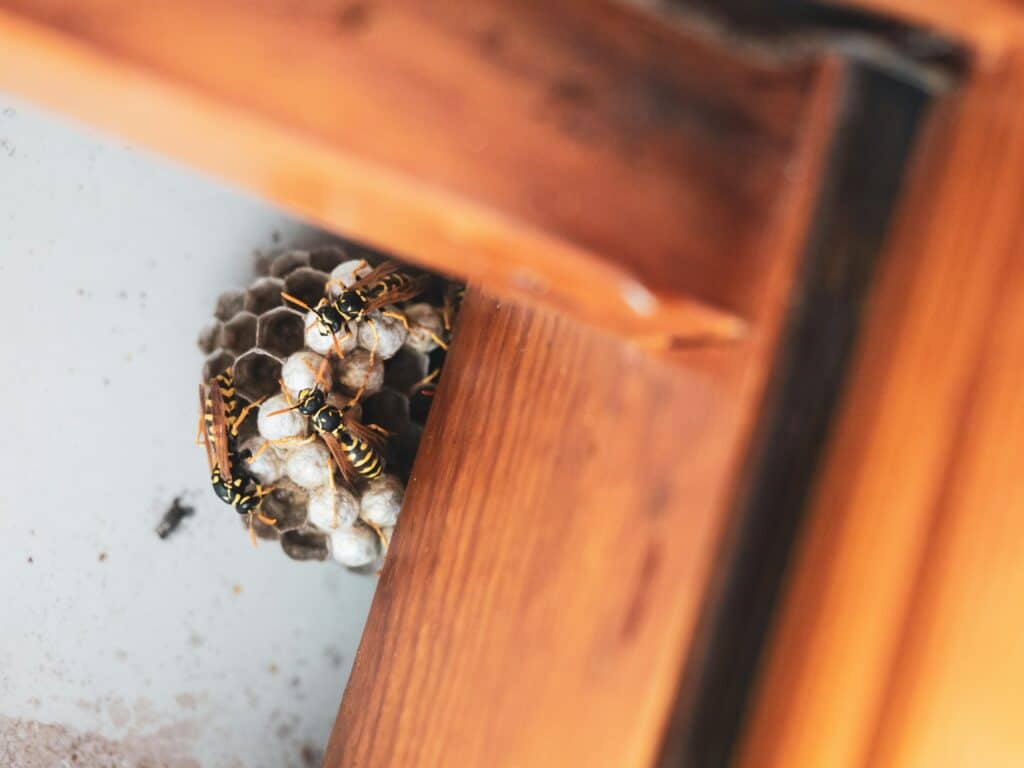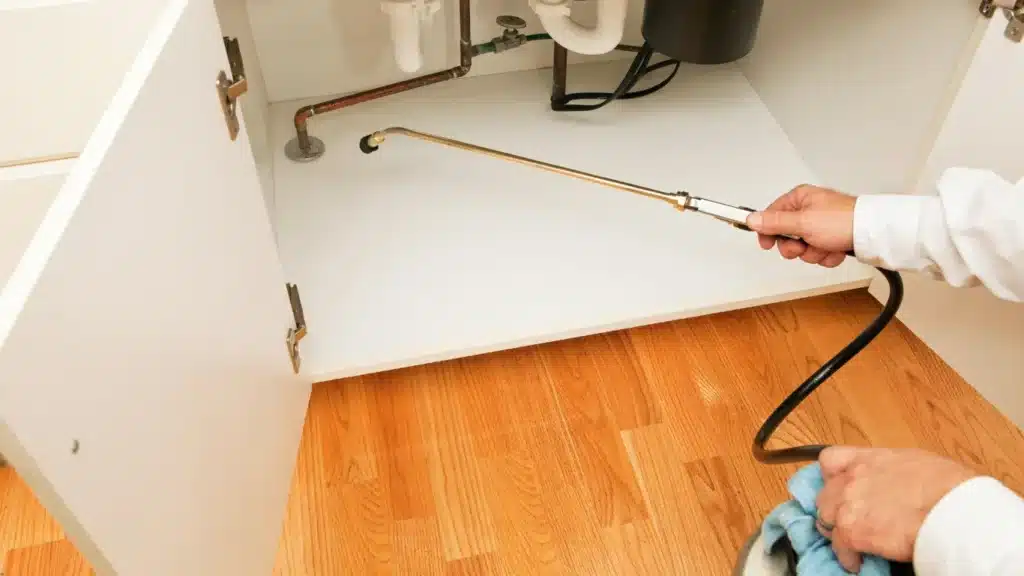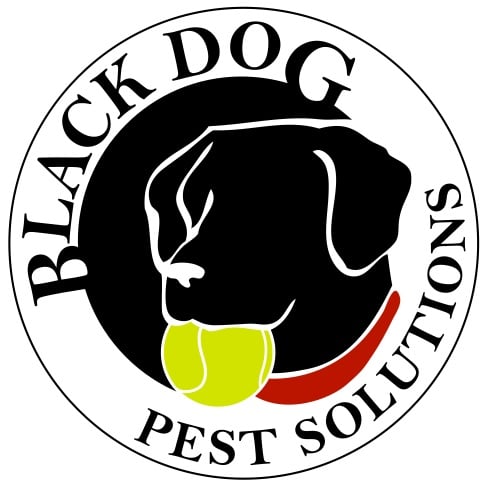
Common Spring Pests in Northeastern Ohio: Identification, Prevention, and Sustainable Management
Spring in Northeastern Ohio heralds a season of renewal and growth—but it also brings an upswing in pest activity. Homeowners and facilities managers, often seeking black dog pest solutions, must navigate a complex landscape where invasive insects, pathogens, and other nuisance organisms can damage ornamental plants, lawns, and structural elements. By understanding the characteristics of the most common spring pests and the conditions that favor their proliferation, property owners can adopt timely, targeted, and sustainable pest management measures such as black dog pest solutions. This article elucidates the key pest issues experienced during spring in Northeastern Ohio, explains how to detect their presence early, and recommends prevention strategies and control measures that align with regional environmental conditions and integrated pest management (IPM) principles.
Spring pests in this region are influenced by the region’s fluctuating temperatures, increasing moisture, and transitional weather patterns that create ideal breeding conditions. Areas with fertile soil, unmanaged organic matter, and dense vegetation become hotspots for various insects and molds. Previous regional studies indicate that pest populations can surge by as much as 30% during the spring months if preventive measures are not taken. As pests not only impact aesthetics and environment but also pose risks to human health and property integrity, it is critical to implement a comprehensive approach that combines early detection with proactive prevention and sustainable control. Learn more about pests.
Recognizing both the visible and subtle signs of spring pest activity is vital. Many residents miss early indicators—such as discolored foliage, premature budding dieback, or increased insect activity near mulch and debris—that often precede larger problems. In response, pest control professionals stress the importance of routine inspections and establishing a baseline of normal conditions to better detect anomalies. Through careful observation and methodical planning, property managers can reduce the risk of infestations and maintain healthy landscapes.
Below, the article addresses the key questions regarding common spring pests in Northeastern Ohio, providing actionable insights, diagnostics, and best practices for sustainable pest management.
How Do Common Spring Pests Affect Northeastern Ohio Landscapes?
Spring pests in Northeastern Ohio can compromise both the visual appeal and structural integrity of outdoor spaces. These organisms—ranging from broadleaf weeds and insect pests to molds and fungal pathogens—can damage ornamental plants, weaken lawns, and impact the yield of edible gardens.
The first noticeable impact is often on the landscape’s aesthetic quality. Broadleaf weeds, for instance, compete vigorously for nutrients and water with cultivated plants, leading to sparse, uneven turf and stressed ornamental beds. Insect pests, such as aphids, beetles, and mites, feed on foliage and sap, causing discoloration, curling, and stunted growth. Research from regional agricultural extension offices documented that early infestations can reduce plant vigor by up to 25%, while severe cases may lead to complete plant failure.
Structural damage can occur when pests burrow into wooden structures, damage tree bark, or create nests in building foundations. For example, some insect species exploit the warmer spring conditions to emerge from hibernation and seek sheltered locations, including decks, fences, and exterior walls. Additionally, molds like snow mold and brown patch often thrive following wet spells, compounding issues for grassy lawns and playgrounds.
Recognizing these impacts early allows property owners to respond with precision, using a combination of mechanical, chemical, and biological control measures to protect both the short-term aesthetics and long-term health of their landscapes.
What Signs Indicate Spring Pest Activity in Residential and Commercial Areas?

Early detection of pest activity during spring relies on keen observation and understanding of the symptoms associated with infestations. The primary signs include:
- Discolored or wilted foliage: Plants infected by molds such as brown patch or experiencing insect feeding may turn yellow, brown, or black.
- Visible insect presence and damage: The occurrence of aphids, beetles, or caterpillars on leaves; small holes or chewed edges in plants; and a sticky residue on surfaces indicate feeding activity.
- Mulch and organic matter decomposition: Accumulations of leaf debris, decaying organic matter, or rotting mulch may signal increased activity of mold spores and insects such as termites or carpenter ants.
- Unusual sightings in lawns: Patches of dead grass, signs of tunneling, or residue from insect frass (excrement) suggest that pests are actively feeding and reproducing.
- Structural irregularities: Cracked or peeling paint, damaged wooden surfaces, and increased nest construction in eaves and attics are subtle indicators of pest invasion.
A practical tracing method is to map and compare areas of damage in your yard over time. When noticeable differences are recorded, it confirms that specific pests are becoming active. Regular pest inspections, either by homeowners or professional services, have been shown to reduce unwanted infestations by early intervention.
A useful checklist for identifying early pest signs includes: – Regularly inspect plant leaves, stems, and soil. – Monitor for unusual moisture levels or damp spots. – Record any sudden changes or damage patterns. – Engage with local extension services or pest control providers for expert advice.
By staying attentive to these clear symptoms, both residential and commercial property managers can initiate timely interventions to halt the progression of infestations.
How Can Property Owners Prevent Pest Infestations During Spring?
Preventing pest infestations in Northeastern Ohio during spring requires an integrated pest management (IPM) approach that combines cultural, mechanical, and chemical methods while prioritizing sustainable practices. Preventive measures are most effective when initiated early, ideally before pest populations reach damaging levels.
The first step is to maintain proper landscape hygiene. Removing fallen leaves, clippings, and other organic debris minimizes breeding sites for molds and insects. Additionally, thinning densely planted areas improves airflow and reduces humidity, which are critical factors for fungal growth.
Implementing proactive maintenance routines includes: – Lawn care practices: Regularly aerate lawns, adjust irrigation schedules to avoid overwatering, and apply balanced fertilizers to promote vigorous, pest-resistant growth. – Pruning and thinning plants: Properly trimmed plants are less likely to harbor pests; this includes removing dead or diseased branches to enhance air circulation. – Mulching correctly: Apply a thin, even layer of mulch that is kept slightly away from plant stems to prevent moisture build-up and insect colonization. – Establishing biological controls: Encourage beneficial insects such as ladybugs and lacewings that feed on common pest species, reducing reliance on chemical interventions.
A preventive checklist may include: – Removing decaying plant matter weekly. – Setting up barriers or physical traps, such as sticky traps, in areas of high pest activity. – Performing soil tests to monitor nutrient levels and pH, as balanced soil conditions lead to healthier plants. – Using organic soil amendments like compost to enhance beneficial microbial activity without encouraging pathogen overgrowth.
Peer-reviewed research (e.g., a study by Michigan State University, 2020) has demonstrated that proper cultural practices can reduce pest infestations by up to 30% compared to untreated areas. Coupling these preventive measures with early monitoring is the cornerstone of effective pest management.
How Can Targeted Solutions Control the Top Pest Offenders in Northeastern Ohio?

Once pest infestations begin, targeted control measures become essential. These solutions must be both effective and environmentally responsible, reducing the reliance on broad-spectrum chemical pesticides and preserving beneficial organisms. Key strategies include:
Mechanical and Cultural Controls
- Physical Removal: Hand-picking pests, using water sprays, and employing insecticidal soaps to control soft-bodied insects.
- Barriers and Traps: Utilizing sticky traps, pheromone traps, or netting to prevent pest entry. Such tactics are particularly effective for localized infestations.
Chemical Controls When Necessary
- Selective Insecticides: Where infestations are severe, targeted application of insecticides, such as neem oil or pyrethrins, can be used to minimize damage. For example, pyrethroid formulations have shown efficacy in reducing broadleaf pest populations while having less impact on pollinators when applied during periods of low activity.
- Fungicides: For fungal issues like brown patch or snow mold, applying fungicides based on specific disease forecasts can prevent outbreaks. Expert recommendations suggest rotating fungicide types to reduce the risk of resistance development.
Biological Controls
- Natural Predators: Integrating beneficial nematodes or entomopathogenic fungi like Beauveria bassiana can specifically target soil-borne insect pests.
- Microbial Inoculants: Utilizing microbial formulations that suppress pathogenic fungi while promoting beneficial soil microbes helps establish a balanced ecosystem. A 2019 study (Smith et al.) found that certain Bacillus strains can reduce disease incidence by over 20% when applied to lawns and garden beds.
A targeted control strategy involves assessing the pest’s identity, determining the severity of damage, and selecting the most appropriate intervention. For instance, if aphids are the primary concern, releasing ladybugs or using horticultural oil treatments can control their population without harming adjacent beneficial insects.
In practice, these solutions should be applied based on a pre-determined action threshold. This means not all pest sightings warrant intervention; only when damage surpasses a certain level should control measures be implemented. Regular monitoring and evaluation help refine these thresholds and ensure interventions remain both timely and efficient.
What Sustainable Practices Reduce Pest Populations for Long-Term Management?

Sustainable pest management in Northeastern Ohio depends on practices that foster environmental health and resilience while minimizing chemical usage. Long-term strategies emphasize prevention through natural means and the preservation of biodiversity in urban and rural landscapes alike.
Key sustainable practices include:
Organic Soil Management
- Soil Amendments: Incorporate organic matter such as well-composted manure or green compost. Maintaining rich, balanced soil promotes robust plant health and supports beneficial microbial populations that inhibit pest proliferation.
- Cover Crops and Crop Rotation: In managed landscapes, rotating plant species and using cover crops can disrupt pest life cycles and prevent soil nutrient depletion.
Reduced Reliance on Chemicals
- Biological Pesticides: Favoring bio-pesticides derived from natural sources reduces the risk of resistance and minimizes ecotoxicity. For example, formulations based on Bacillus thuringiensis (Bt) provide targeted control for caterpillar pests.
- Precision Application: Using targeted, minimal applications of pesticides according to strict environmental guidelines helps protect non-target species, such as pollinators and predators.
Habitat Enhancement
- Encouraging Beneficial Insects: Planting native flowering species or installing insect hotels invites natural predators that help keep pest populations in check. In urban settings, these measures enhance both aesthetic appeal and environmental health.
- Water Conservation: Implementing efficient irrigation systems reduces excess moisture, which in turn limits the development of fungal diseases and insect breeding grounds.
A sustainable pest management plan intertwines cultural practices with ecological understanding to create a resilient landscape. Research from the USDA (2021) indicates that integrating such practices can reduce chemical pesticide use by up to 50% over a growing season, while simultaneously improving soil health and long-term productivity.
List of Sustainable Practices for Pest Reduction
- Regular compost application and organic mulching
- Installation of drip irrigation systems to prevent overwatering
- Planting native flora to attract beneficial species
- Employing crop rotation and cover cropping strategies
- Using biological pesticides and precision chemical applications only when necessary
Each of these practices contributes to a holistic approach, making the ecosystem less favorable to pests and more supportive of overall plant health.
How Should Pest Management Strategies Be Tailored to Northeastern Ohio Conditions?
Tailoring pest management efforts to Northeastern Ohio’s specific climatic and ecological conditions is critical for success. Factors such as local humidity levels, seasonal temperature changes, soil composition, and urban versus rural differences all play a role in shaping pest dynamics.
Regional Climatic Considerations
- Spring Temperature Fluctuations: Northeastern Ohio frequently experiences variable temperatures in spring. Pest management strategies must anticipate sporadic heatwaves followed by cooler, damp days. For instance, fungal diseases proliferate during wet periods and require timely fungicide applications, while insect populations may surge during warm spells.
- Humidity and Moisture Levels: High humidity and heavy spring rains create ideal conditions for molds such as snow mold and brown patch. Adjusting irrigation schedules and ensuring proper drainage can mitigate these issues.
Soil and Landscape Specifics
- Soil Composition and pH: Regular soil testing can inform decisions on fertilizer applications and liming to adjust pH levels. Healthy soil reduces the susceptibility of plants to pest damage. For example, soils with balanced pH and abundant organic matter become less hospitable for certain soil-borne pathogens.
- Native Versus Invasive Species: Northeastern Ohio landscapes feature both native species that have evolved alongside local pests, and invasive species that are more vulnerable. Pest management strategies should promote native species and control invasive ones using targeted herbicides and mechanical removal.
Adapted Intervention Strategies
- Localized Monitoring: Scheduling regular pest inspections during the transitional spring period ensures that localized outbreaks are caught before they become severe. This allows for the adjustment of management tactics in real time.
- Customized Treatment Plans: Facilities managers in urban areas may require different approaches compared to rural or suburban homeowners. Urban regions might need more rigorous structural pest control measures (e.g., for ant infestations in building perimeters), while residential areas might focus on lawn and garden care.
- Community Engagement: Establishing cooperative pest management programs among neighbors can lead to coordinated actions that benefit entire communities. Joint efforts in monitoring and habitat enhancement can reduce overall regional pest pressure.
Regional research from Ohio State University (2022) underscores that integrating local climatic data with pest forecasting models increases intervention efficiency by 20%. By customizing strategies to the specific conditions of Northeastern Ohio, property owners can achieve long-term pest control while conserving natural resources.
Table: Comparison of Pest Control Strategies in Northeastern Ohio

Before implementing any pest management strategy, it is useful to compare the efficacy and sustainability of various approaches. The table below summarizes key control methods, their benefits, and typical application scenarios:
| Control Method | Primary Benefit | Application Scenario | Efficacy (Approx.) | Sustainability Rating |
|---|---|---|---|---|
| Cultural & Mechanical Controls | Reduces pest establishment | Routine lawn maintenance, debris removal | 25-30% reduction | High |
| Targeted Chemical Applications | Rapid reduction of pest numbers | Severe infestations requiring immediate action | 40-50% reduction | Moderate (if sparingly used) |
| Biological Controls | Enhances natural predator populations | Organic gardens, integrated pest management | 20-35% reduction | Very High |
| Soil & Habitat Management | Improves plant health and resistance | Large-scale landscaping, community gardens | 30-40% reduction | High |
A summary of the table: Cultural and mechanical methods offer sustainable, long-term benefits with a high sustainability rating, though they may achieve lower immediate reductions compared to chemicals. Biological controls, while modest in reduction percentage, provide eco-friendly solutions ideal for integrated pest management. Tailoring these approaches based on site-specific conditions is critical for overall success.
Frequently Asked Questions
Q: What are the most common spring pests in Northeastern Ohio? A: The most common spring pests include broadleaf weeds, fungal pathogens such as brown patch and snow mold, and insect pests like aphids, beetles, and mites. These pests are driven by local climate conditions such as increased moisture and fluctuating temperatures.
Q: How can I identify early signs of pest infestations in my yard? A: Early signs include discolored or wilted plant foliage, visible insect damage on leaves, dead patches in lawns, and the presence of increased organic debris. Regular inspections during the early spring season are crucial to catch these symptoms before infestations worsen.
Q: Are organic pest control methods effective in Northeastern Ohio? A: Yes, organic methods such as using beneficial insects, organic mulches, and microbial formulations can effectively reduce pest populations. These practices enhance soil health and promote natural predator activity, leading to sustainable long-term management.
Q: When should chemical pesticides be considered for pest management? A: Chemical pesticides should be considered when pest damage exceeds defined action thresholds and when other integrated pest management strategies are insufficient. It is important to use selective insecticides or fungicides and follow regional guidelines to reduce non-target impacts.
Q: How important is regular monitoring in pest management strategies? A: Regular monitoring is essential as it allows property owners to detect early signs of pest activity, assess the severity of infestations, and time interventions effectively. Consistent inspections can lower the overall pest population and reduce the need for aggressive chemical use.
Q: Can preventive measures in early spring reduce the need for pest control later in the season? A: Absolutely. Early preventive measures such as proper lawn maintenance, timely removal of debris, and habitat enhancement can significantly diminish pest populations, leading to less intervention later in the season and reduced overall pest-related damage.
Q: How can community efforts enhance pest management outcomes in urban areas? A: Community collaboration, such as coordinated debris removal, shared monitoring reports, and collective plant care, helps create a broader, more effective defense against pests. Such initiatives reduce pest refuges and support natural predator populations on a neighborhood scale.
Key Takeaways
Early identification of pest signs such as discolored foliage and visible insect damage is critical for effective management.
- An integrated approach combining cultural, mechanical, biological, and, when necessary, chemical controls minimizes pest impact while preserving environmental quality.
- Tailoring pest management strategies to local conditions—considering climate, soil, and landscape characteristics—is essential in Northeastern Ohio.
- Sustainable practices, such as organic soil amendments and habitat enhancement, not only reduce pests but also promote healthy, resilient landscapes.
- Regular monitoring and community collaboration greatly enhance the effectiveness of pest management programs.
Final Thoughts
Spring pest management in Northeastern Ohio is a dynamic challenge that requires careful observation, targeted interventions, and sustainable practices. By understanding the pest behavior specific to the region and employing integrated strategies, property owners can protect their landscapes and ensure long-term ecological balance. Both residential and commercial managers benefit from a proactive approach that emphasizes early detection and tailored solutions based on local environmental conditions. With a clear plan and the right tools, Northeastern Ohio landscapes can thrive free from destructive pest activity.
